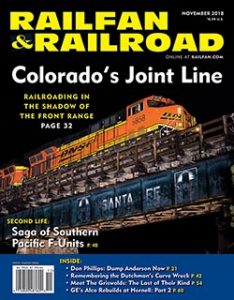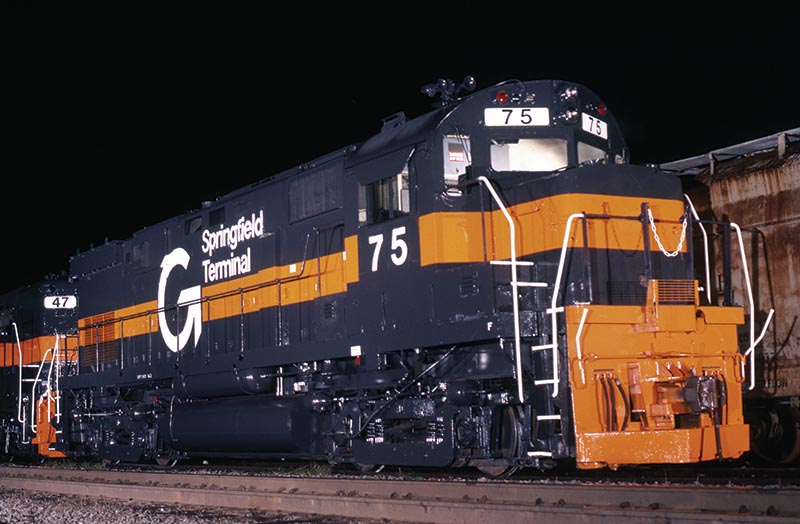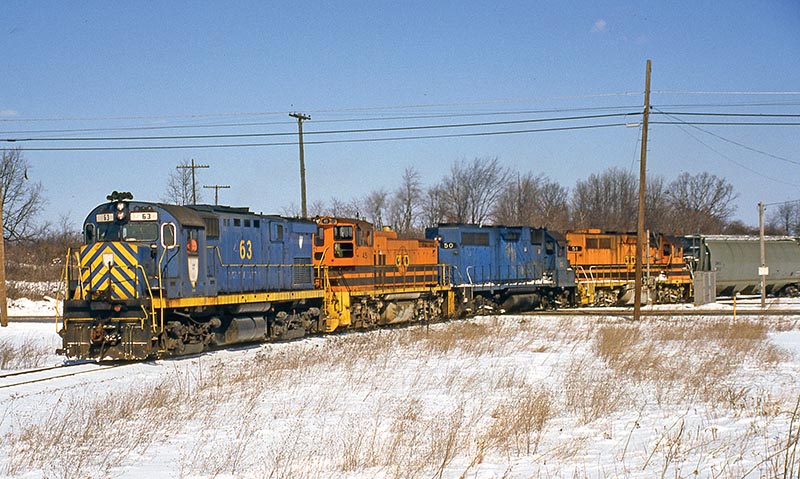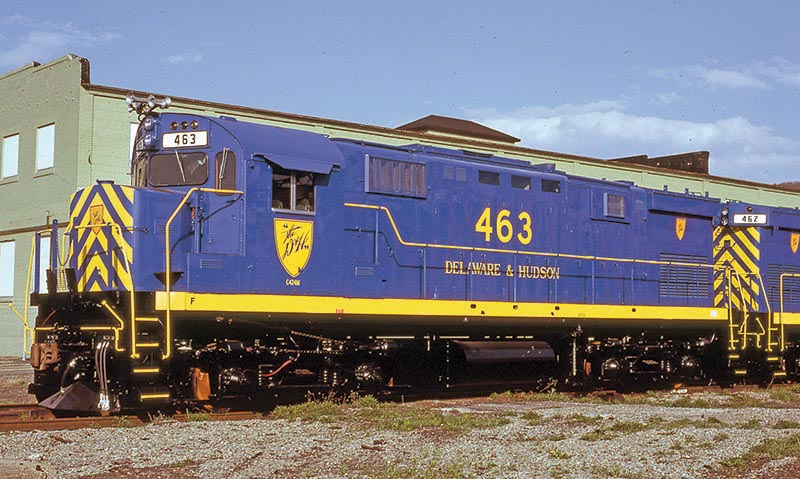 By Jim Rowland/photos as noted
By Jim Rowland/photos as noted
When Alco shut down its domestic production at Schenectady, N.Y., in 1969, American railroads were in the throes of the second-generation diesel wave. As EMD and General Electric asserted their dominance in the market by the end of the 1970s, many serviceable Alcos were sent to the scrap lines as the larger railroads sought to standardize their fleets.
In part one (see October 2018 Railfan & Railroad), we discussed how General Electric’s main production facility at Erie, Pa., was running at full capacity, building new diesels. In 1978, General Electric Apparatus was established in the old Erie Railroad shops in Hornell, N.Y., to refurbish and rebuild diesel locomotives for various customers, chiefly Ferrocarriles Nacionales de México (NdeM). Utilizing the sizable number of retired Alco Centuries sent in by Conrail for trade-in, GE began to refurbish those units for new customers. For railroads on a budget, a reconditioned Alco Century could be purchased for a fraction of the cost of a brand-new EMD or GE locomotive. Between 1979 and 1981, some of the first orders for rebuilt Alco road power were placed by Green Bay & Western, Apache Railway, and Detroit & Mackinac.
Following the initial order from Green Bay & Western, General Electric continued to find customers for rebuilt Alco road power. They soon received their largest order from two longtime disciples of Alco power.
Delaware & Hudson and the Genesee & Wyoming Salt Trains
Delaware & Hudson and Alco had been synonymous for decades by the time 1980 rolled around. The railroad had long been faithful to Alco power going back to the steam era. What’s more, the main assembly plant in Schenectady was located right along the D&H main line.

Springfield Terminal C-424 75 poses outside the old Delaware & Hudson shops at Oneonta, N.Y., in fresh Guilford Rail System paint on August 22, 1987. Originally Reading 5207, the unit was retired by Conrail in 1979 and rebuilt by GE in 1980 as D&H 456. It was later returned to Guilford to become Maine Central 455, and was scrapped in July 2000. Photo by Kermit Geary Jr.
Following the inception of Conrail on April 1, 1976, D&H’s traffic patterns and motive power needs changed radically. To help fill motive power needs after being granted extensive trackage rights over Conrail, D&H purchased 20 new EMD GP39-2s. Additionally, the former Lehigh Valley C-420 and GP38-2 as well as former Reading GP39-2 fleets were transferred directly to the D&H. In 1978, D&H sold its C-628s, SD45s, and U30Cs to Diesel Services International, which in turn sent them to NdeM. Also noteworthy is that the PA-4s rebuilt by Morrison-Knudsen also left the roster that year. This left D&H with a predominantly four-axle, 2,000-hp, 12-cylinder fleet (plus the GE U33Cs), which adequately met the railroad’s power needs.
In the interim, D&H was leasing U30Bs from Norfolk & Western. This was an expensive and unsatisfactory solution. It became clear D&H was in need of additional power.
D&H found the 12-cylinder engines far easier to work with, less labor intensive, and therefore less expensive to maintain than a 16-cylinder engine. The smaller engines also made it easier to have standardized maintenance across the fleet. Four-axle units were also easier on the track structure and were less rough to ride than six-axle locomotives.
Already equipped and competent to operate Alco products, D&H found the answer to its motive power needs at GE Hornell through a short line in western New York. Founded in 1899, the 14-mile Genesee & Wyoming served one of the largest salt mines in the world, based in Retsof, N.Y. D&H had acquired trackage rights to the G&W as part of the rights it got from Conrail’s formation to help it remain competitive. As a result, G&W routed a large volume of salt traffic over the D&H, which was then forwarded to the Boston & Maine at Mechanicville, N.Y.

Genesee & Wyoming 63 (ex-D&H 463) teams up with some rag-tag power to haul an empty salt train south from P&L Junction at Caledonia, N.Y., on February 26, 1990. Photo by Pete Swanson
In 1979, with D&H’s motive power shortage becoming a concern, G&W approached its partner with an idea to ensure reliable power for their Greigsville Turn that served the salt mine. Fred Cheney, D&H’s chief mechanical officer at that time, recalled, “The Genesee & Wyoming offered three locomotives in lieu of increased rate divisions for handling the salt from Retsof to the B&M.” The G&W originally thought of new EMD GP39-2s since the D&H already had a fleet of them. It turned out that new locomotives cost more than they wanted to spend, so the talks turned to used Alcos that would be remanufactured. “I was the CMO at the time and was not in favor of as-built C-424s because they had 16-cylinder engines and the D&H Alco fleet had 12-cylinder.” Despite both being Alco products, some parts are not interchangeable between the two models. “Secondly, the C-424s all had a multistep shunt controller for transition which was a source of loading problems and maintenance headaches. Remember, a C-424 is basically an RS-27 in a Century carbody. The RS-27s were well-known for electrical problems.” Eventually, D&H agreed as long as the rebuilt units were electrically compatible with its former Lehigh Valley C-420s and if the 16-cylinder engine was replaced with a 12-cylinder one. (It is believed the removed 16-cylinder engines were traded back to Alco’s engine plant at Auburn, N.Y.)
Genesee & Wyoming’s three units — 461, 462, and 463 — were delivered in May 1980 wearing full Delaware & Hudson paint and lettering. Later that year, D&H financed six more units, numbered 451–456. D&H’s six were slightly different from the G&W-financed units, having a redesigned rear cab bulkhead control panel and a cooling air system in the main generator compartment. This air system eliminated inertial air filters and it got warm, clean air into the generating compartment. This addition resulted in the long, rectangular bulge on the engineer’s side of the unit underneath the dynamic brake vents…



